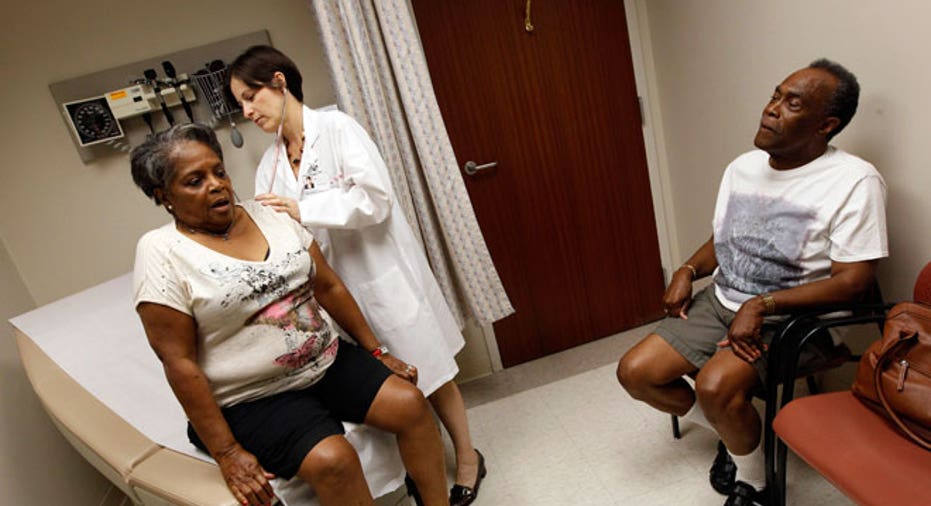How Technology Will Change Your Doctor Office Visits

Your trip to the doctor’s office could look dramatically different in the future as technology advancements continue to change the doctor-patient relationship and the office visit experience.
Experts expect doctors to rely more heavily on technology in the future, have multiple practitioners under one roof and to approach healthcare from a more patient-centered perspective, according to a new survey of medical students.
For the last eight years, mobile health software company Epocrates surveyed roughly 1,000 medical students to get their thoughts on a multitude of health topics. The results of this year’s survey show health care is returning to the days when care --not bureaucracy--was the top focus.
“Of the medical students surveyed, 72% said they would likely practice patient-centered care where the patient is the most important part of the health care team,” says Dr. Anne Meneghetti, director of clinical communications for Epocrates. “The concept comes full circle.”
Rewind just two decades, and it was common for doctors to make house calls and spend more than 10 minutes with their patients. In today’s era of health care, doctors are squeezed for time as they work to see more patients to make up for the smaller reimbursements from insurers.
The Affordable Care Act will also tax the nation’s health-care system as millions of previously uninsured people enter the system. The survey also shows medical students envision care in the future that includes the patient, other doctors, friends and family members playing a role in care. “There’s a big recognition that multiple healthcare providers are part of the team,” says Meneghetti. “They are all part of the patient’s health-care journey.”
In addition to making the patient part of the treatment, the physicians of tomorrow will use technology much more than current doctors. Not only has technology become more advanced, medical students are comfortable juggling a smartphone, tablet PC and computer at any given second as they grew up with the technology. For instance, Meneghetti envisions a scenario where a physician may be able to swivel a tablet screen to show a patient his X-ray, medical test results or a treatment plan instead of just describing what is going on.
What’s more, according to the survey, 44% of the students indicated they are using smartphones, tablets and PCs, and 82% say they would recommend a health related app to their patients.
Technology will also play more of a role outside the doctor’s office in the future. Since a lot of patients’ health depends on the decisions they make every day, like diligently taking medicine or eating well, technology can help hold patients accountable and get support.
“Medical students highlighted as acceptable an online support group instead of attending a traditional one,” says Meneghetti.
How practitioners access clinical data and information will also change. In the past, many doctors would seek clinical information and advice from their peers, but medical students are much more comfortable relying on the Internet for answers. According to the survey, 66% said they turn to digital references for answers, while 53% will first turn to a mobile reference. Only 21% of respondents would go to a peer first to get the information they needed.
Even in this era of oversharing on social networks, medical students are sensitive to privacy issues and wouldn’t be too ready to share patient data on Facebook, according to the survey. In fact, 91% of students wouldn’t friend a patient on Facebook, and 82% think it’s unacceptable to post pictures of a patient or share medical information online.
One thing that hasn’t changed is why these medical students want to become doctors. Although there are a lot of challenges under the current healthcare system, most students aren’t in it for the money or fame—they want to heal. But technology will be used more often in the process .
“The big challenge is how to make it invisible so it doesn’t get in the way of how you serve and engage the patient,” says Meneghetti. “Technology has changed and they want to make the best use of it.”



















